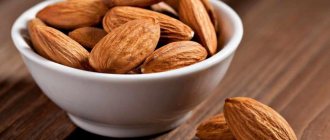How many calories does the average person need per day?
Any activity requires a certain amount of energy expenditure. Without them, physical and mental abilities do not fully manifest themselves. Eating a diet that provides a lot of energy increases fat mass. On the contrary, with a low-calorie diet, gradual weight loss begins.
The whole difficulty lies in finding the golden mean. Losing weight or gaining muscle mass should be, first of all, guided by proper nutrition, and the number of calories must be selected as accurately as possible.
There is an expert opinion on how many calories you should consume per day. For the stronger sex – about 2500 cal., for the weaker sex – 2000 cal. These numbers are approximate.
There are many factors that influence these values:
- Lifestyle;
- work activity;
- schedule;
- meal times;
- floor;
- age;
- amount of physical activity.
You cannot put, for example, a manager in an office and a worker in the construction of a residential building on the same level.
It is also difficult to calculate consumption for a young body. The correct diet, in this case, is difficult to determine even a couple of months in advance.
At the same time, it is possible to take out some axioms:
- the older a person is, the less energy he needs;
- a man needs more energy than a woman;
- pregnant and young mothers form reserves for themselves and their baby;
- during heavy physical activity, the diet must be doubled.
How much energy to spend
Let's take the average figure that a person should spend - this is 2300 kcal. After long calculations, experts concluded that we cannot eat less than 1,200 kcal, which means we need to spend more energy. After simple calculations, which we will not give, he will take only the following:
1,200 kcal + 2,258 kcal = 3,458 kcal.
To lose 10 kg per month , you need to spend 3,458 kcal every day. And the average figure is 2300 kcal, then energy expenditure must be increased by 1,158 kcal to get closer to the figure of 3,458.
Let's try aerobics. We can only burn 360 kcal per hour. To burn the remaining calories, you need to exercise for another 3 hours. Every person understands that this is unrealistic. Can you imagine how much you need to load yourself to create a calorie deficit?
You can take a different path: eliminate sugar and salt , which retain water, that is, switch to unsalted and unsweetened foods. The greater the mass, the faster the kilograms will go away.
Impact of the quality of calories consumed
Food should consist of equal amounts of fats, proteins and carbohydrates. The percentages are 30, 50 and 20. Without these proportions, excess fat remains in the body.
And with excessive consumption of carbohydrates with a decrease in the value of proteins, you will immediately feel a lack of strength, lethargy, and decreased immunity. When you lose one thing, you gain another.
Rules for losing weight
How to count calories? Before counting, you must follow several rules:
- You need to eat 3 times a day and 3 more snacks.
- To get rid of 1 kg of fat rather than muscle, you should create a deficit of 7700 kcal per month.
- It is necessary to create a menu based on the calorie table.
- You should keep a diary where you write down everything you consumed during the day.
- Prepare the diet for 3-4 days to fill the refrigerator in a timely manner.
- Set yourself up to count energy costs.
Calculation of daily caloric intake
If we assume that 1 calorie per 1 kg of weight is burned every hour, then further calculation will show what energy is needed for a weight of 75 kg in the amount of 1800 cal.
This value is only sufficient for normal operating conditions. If you add here the digestion of food, physical and mental stress, the figure will immediately increase.
Currently, the approximate calculation is as follows: on average, per 1 kg of body weight, you need to burn 24 calories in 1 hour. Calculating calories per day for women is more difficult to perform due to the special physiology of the body.
The weaker sex, according to statistics, gains weight faster. And if you are expecting or giving birth to a child, your weight increases by leaps and bounds.
Lifestyle plays an important role here. With low mobility, middle-aged women will need 1800 per day, with average mobility - 2000, with high mobility - 2200.
When losing weight, subtract 500 units from the value you derived. This scheme will allow you to lose weight by 0.5 kg weekly. The main thing is not to get carried away with weight loss. Reduce calories below 1200 units. undesirable.
The calorie intake for men is significantly different compared to women's. A man needs protein. And to get it, energy reserves will have to be increased.
With a sedentary lifestyle, middle-aged men require 2200 cal., with moderate mobility - 2500 cal., with high mobility - 3000 cal.
We offer you several example calculations with formulas.
Imagine that you have to prepare a healthy and tasty soup. For it, you took all the necessary products, and you always weighed them “raw”. Then we did the calculations and this is what we got:
In 1.5 liters of beef broth you counted 75 kilocalories, in 150 g of potatoes – 128 kcal, in 150 g of fresh carrots – 45 kcal, in 250 g of cauliflower – 75 kcal. 100 grams of greens (dill and parsley) contain 20 kcal, and the energy value of 200 g of peas is 150 kcal. We do not count the calorie content of salt, because it is added to taste.
As a result, we got 2350g of products with a total energy value of 493 kcal.
Everything is ready, all that remains is to put the soup on the stove. Don't forget an important step: before you start cooking, weigh the pan, and then do the same procedure with the soup, not counting the weight of the container in which we cook. We got 1930 g - the volume decreased during cooking. The calorie content of the dish is 493 kcal. Let's start calculating the energy value of 100g of soup. To do this, we make the following proportion:
100*493/1930 grams = 25.5 kcal per 100g of our wonderful soup.
As you can see, there is nothing complicated about this. Here's another example: this time we're preparing compote.
Remember that the daily calorie value was invented for a reason: it must be observed day after day, without increasing the number to please your stomach.
Let's take 1000 g of apples and apricots. The calorie content of the first is 300, and the second is 450. 3000 g of water does not contain kilocalories, so feel free to put 0 in this column.
From this amount of fruit we can make 5 liters of delicious compote. We do not add sugar - these are additional calories. If you want to sweeten the drink, use a sweetener like Susli. His caloric intake is zero.
Let's do the calculations:
100*750/500 = 15 kcal per 100g.
What if we bake and not cook? Then we use special calculation coefficients: 1.3 for baked goods and salty foods, 1.6 for dried foods, etc. The rest of the information can be found in our book, in which you will find everything you need for calculations.
How to calculate the calorie content of, for example, salted herring? The energy value of fresh fish is 320 kcal. Multiply this number by 1.3 and get 392.6 kilocalories.
However, do not forget that salt retention in the body is fraught with edema. Eat no more than 20 grams of your favorite product per week and you will never encounter this problem.
Daily calorie intake for weight loss
In order to find out how many calories you need to consume to lose weight, you should calculate your daily energy expenditure. After you have calculated your daily requirement, feel free to subtract 20% from this value, but let us remind you that this figure should not be less than 1200 units.
This will be your calorie intake for weight loss. Strive to stick to the results you get and you will soon feel the changes yourself.
Proper diet for children
If the adult male and female organisms are fully studied, the issue of proper nutrition for children remains on the surface from year to year. Each child is individual.
The quality of food is of paramount importance. Depending on the age, a child needs 800 calories at 1 year, 1500 at 3 years, 2000 at 6 years, 2900 at 13 years.
Keeping yourself in good shape throughout your life is no easy task. Her decision depends only on you.
For questions about proper nutrition, cleansing the body, choosing the right diet, you can always contact us. In our case, we are always ready to come to your aid.









